

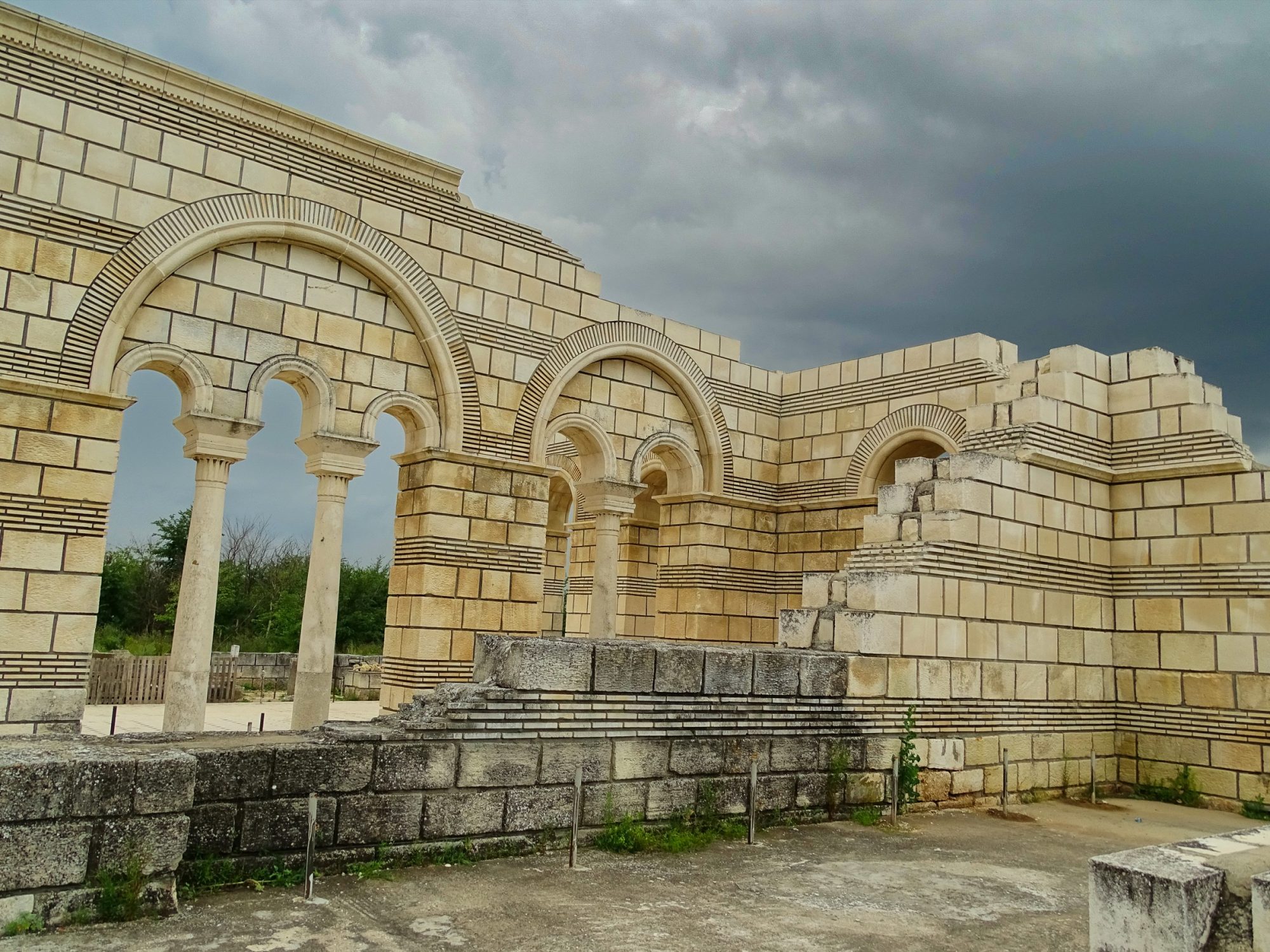
The remains of the first capital of Bulgaria – Pliska, can be visited at the Pliska Historical and Archaelogical Reserve, which is located 25 km from the center of Shumen. The medieval town of Pliska is located on 23- thousand acres area, making it one of the largest medieval towns in Europe. It was founded by the first Bulgarian ruler, Khan Asparuh.
Pliska was the capital of the Bulgarian state for more than two centuries (681–893). The names of 18 Bulgarian rulers are associated with Pliska, including Tervel (700-721), Krum (802-814), Omurtag (814-831), Boris I Mikhail (852-889). The khan’s residence was established at the center of Pliska where the first wooden buildings were erected.
Later, different settlements arose around it, protected by an earthen rampart and a moat. In 811, Pliska was cоnquered by the Byzantine emperor Nikephoros Gennik. After his withdrawal, the wooden buildings were burned. Later, massive stone buildings and high fortress walls were erected at their place.
In the first half of the 9th century, a representative palace, a residential palace, pagan temples and numerous farm buildings were built in Pliska. The Khan’s residence was supplied with water through a complex network of water pipes made of clay, also lead pipes and many baths were built.
Undoubtedly the greatest event associated with Pliska and which changed the fate of Bulgaria was the conversion to Christianity. Numerous Christian churches appeared in and around the residence. Among them was a magnificent cathedral, known as the Great Basilica. Located 1.3 km northeast of the Khan’s residence, it is admired for its large size and rich decoration of mosaics, marble columns, bases and chapiters. The large basilica and the complex of buildings that were erected around it became the center of the Bulgarian Archbishopric from the second half of the 9th century. In 886, the students of Cyril and Methodius were welcomed there, thus laying the foundations of the first Slavic literary school.
Pliska was discovered by the pioneer of Bulgarian archaeology, Karel Shkorpil. The first excavations were carried out in 1899 and continue until today. The discovered remains have been preserved and nowadays form an open-air museum. What visitors can see now are the remains of the fortress walls, the palaces of Krum and Omurtag, the temples of god Tangra, the Great Basilica and many other farm and residential buildings.
For the first time, a museum in Pliska was opened on May 15, 1940, and it was dedicated to the canonized king saint Knyaz Boris-Mikhail. In 2006, the museum building was renovated and expanded. An interesting architectural solution is the inclusion of the southern face of the northern fortress wall in the interior of the exhibition hall. The museum is modernized, and the exhibition hall houses many of the artifacts discovered during more than a hundred years of archaeological research. Arranged chronologically, they define the main religious periods in Pliska – pagan and Christian.
Attempts have been made to restore the two palaces – the palace of Khan Krum (Krumov Palace) and the palace of Khan Omurtag, as well as the main Christian temple – the Great Basilica. Life in the capital city with all its diversity and everyday life, culture and armament can be traced from the exhibits on display. The seals of Knyaz Boris-Mikhail, Tsar Simeon, Peter and Maria, Bishop Nikolay and Archbishop Georgi are symbols of medieval Bulgarian state and the law of religion. The open seal of the Byzantine ruler Basil II testifies to Bulgaria’s contacts with the Byzantine Empire.
The Pliska National Historical and Archaeological Reserve is located 25 km from the city of Shumen and 70 km from the city of Varna. The road is well-maintained and asphalt. The complex has an information center and a pavilion for advertising materials and souvenirs.
The guided tour service covers the entire working hours with talks in Bulgarian, English and German.
Working hours: 08:30 – 19:00 (from 01.04 – 31.10.2025)
Prices:
Regular ticket – 7 BGN / € 3.58
Reduced price for pensioners – 5 BGN / € 2.56
Reduced price for pupils and students – 3 BGN / € 1.53
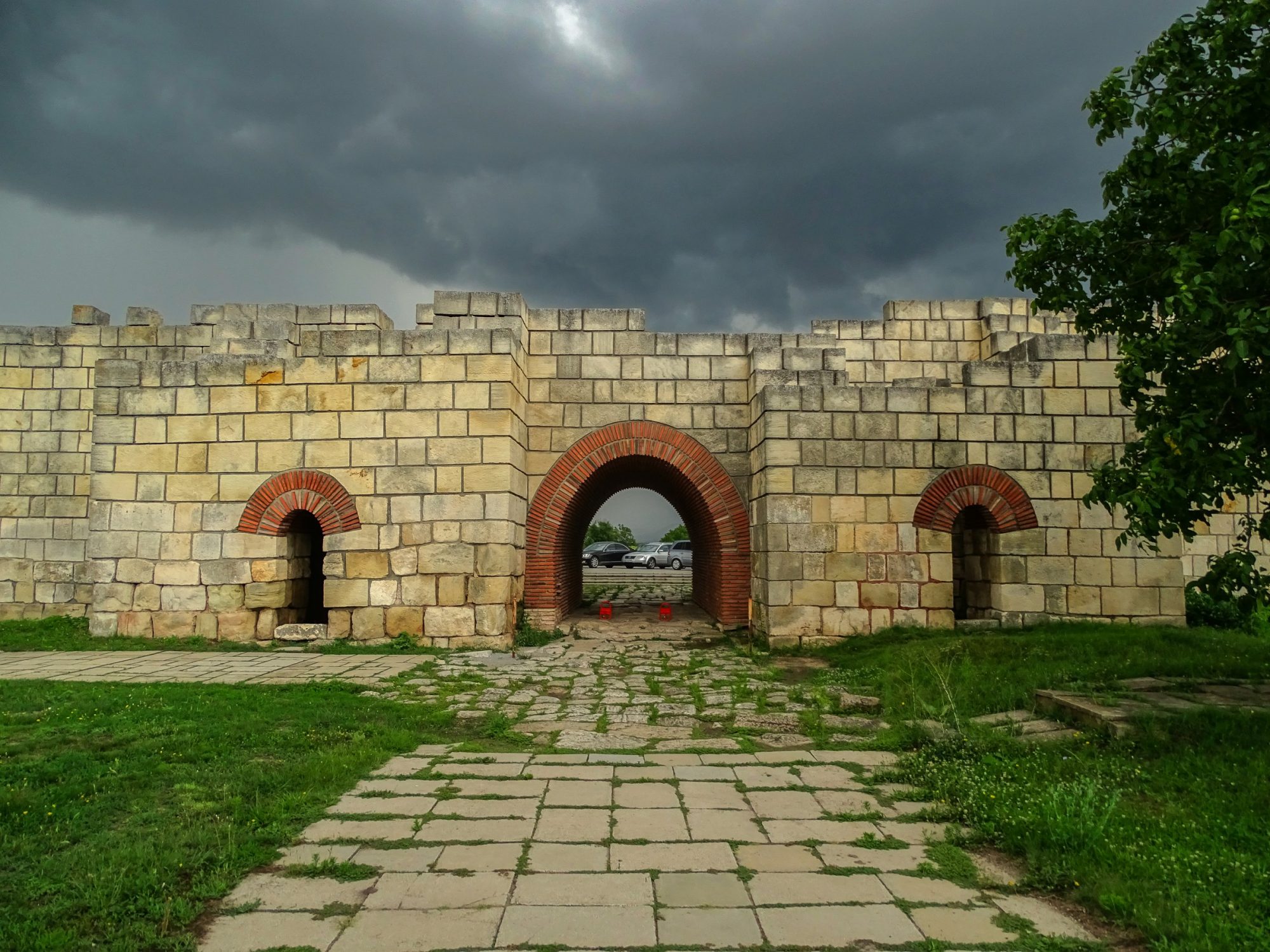
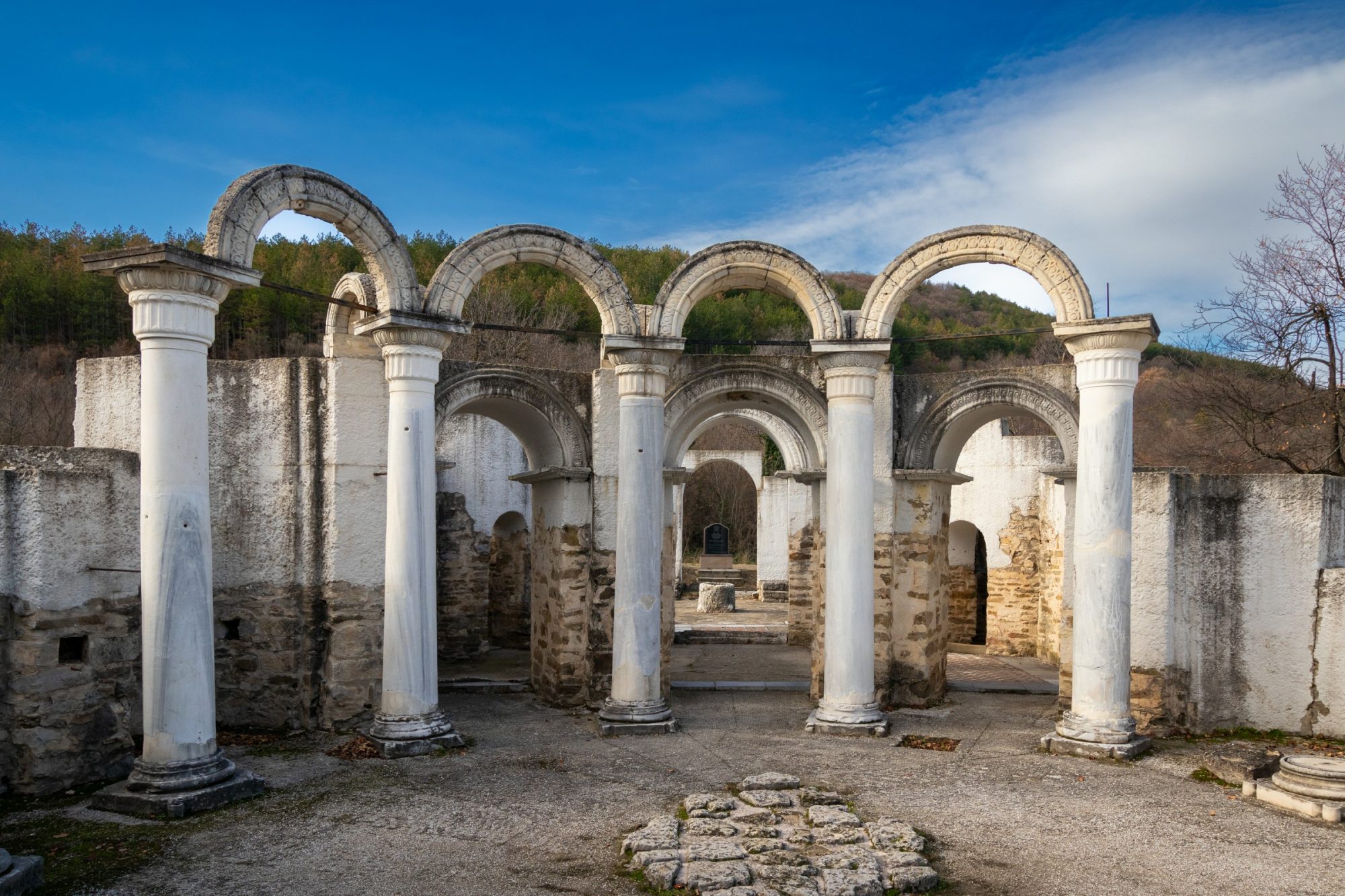
The remains of the second capital of Bulgaria – Veliki Preslav, are preserved and can be viewed at Preslav National Historical and Archaeological Reserve. The old town dates back to the Medieval ages and it is located 22 km from the center of Shumen.
Veliki Preslav witnessed some of the greatest moments in Bulgarian history. During the reign of Tsar Simeon I the Great, the city became the second capital of Bulgaria after Pliska. This happened in 893 and research says that the settlement was designed in such an exquisite way that it could compete even with the majestic Constantinople.
The most representative place in the capital is the palace, built on a high plateau. It consists of two main parts – the Great Palace with the Throne Hall, the Small Residential Palace and the Royal Basilica. The whole place was an architectural masterpiece, full of decorations and stone sculptures – bases, columns, chapiters, etc.
Over the years, the complex has been rebuilt many times. On a high terrace nearby is the so-called Golden Church, built during the reign of Tsar Simeon – an incredible monument of medieval construction.
The royal basilica, known as the Round or Golden Church, is one of the most significant historical discoveries in the area, which we can still see today. It is located directly opposite the royal castle, 30 m from it, and has impressive dimensions for its time – 21.10 m by 47.50 m. This makes it the second largest temple discovered in Bulgaria. It dates back to the 9th century, but it is not specified whether it was built during Simeon’s reign. It is a three-aisled basilica with an entrance from the west, which is also richly decorated.
In addition to the most important buildings, the excavations revealed the foundations of many more buildings, both near and far from the central ones. Several churches were built in different parts of the city, as well as an archbishop’s palace. The farm buildings are an evidence of the strong economy of the state at that time – buildings with fireplaces, commercial premises, storehouses, etc. Visitors can also see the main entrance, remains of several baths and sewer system.
The exhibition of the Veliki Preslav Archaeological Reserve features original works of Old Bulgarian and Middle Byzantine art. The museum houses over 35,000 objects, about 1,700 of which are on display for visitors.
Among the exhibits on display are masterpieces such as the ceramic icon of St. Theodore Stratilates, a replica of Preslav Golden Treasure (the original treasure is in Sofia Archaelogical museum) and the Ceramic Iconostasis from the Palace Monastery, which was included in a number of Bulgarian and international exhibitions. The museum’s exposition includes a replica of Preslav Golden Treasure ( over 170 objects made of gold, silver and bronze), the typical of Veliki Preslav painted white ceramics (facing tiles, household utensils and icons), as well as a collection (among the largest in the world) of Middle Byzantine seals from the period 971 – 1088.
Tickets: see https://en.museum-velikipreslav.com/for-the-museum/prices.html
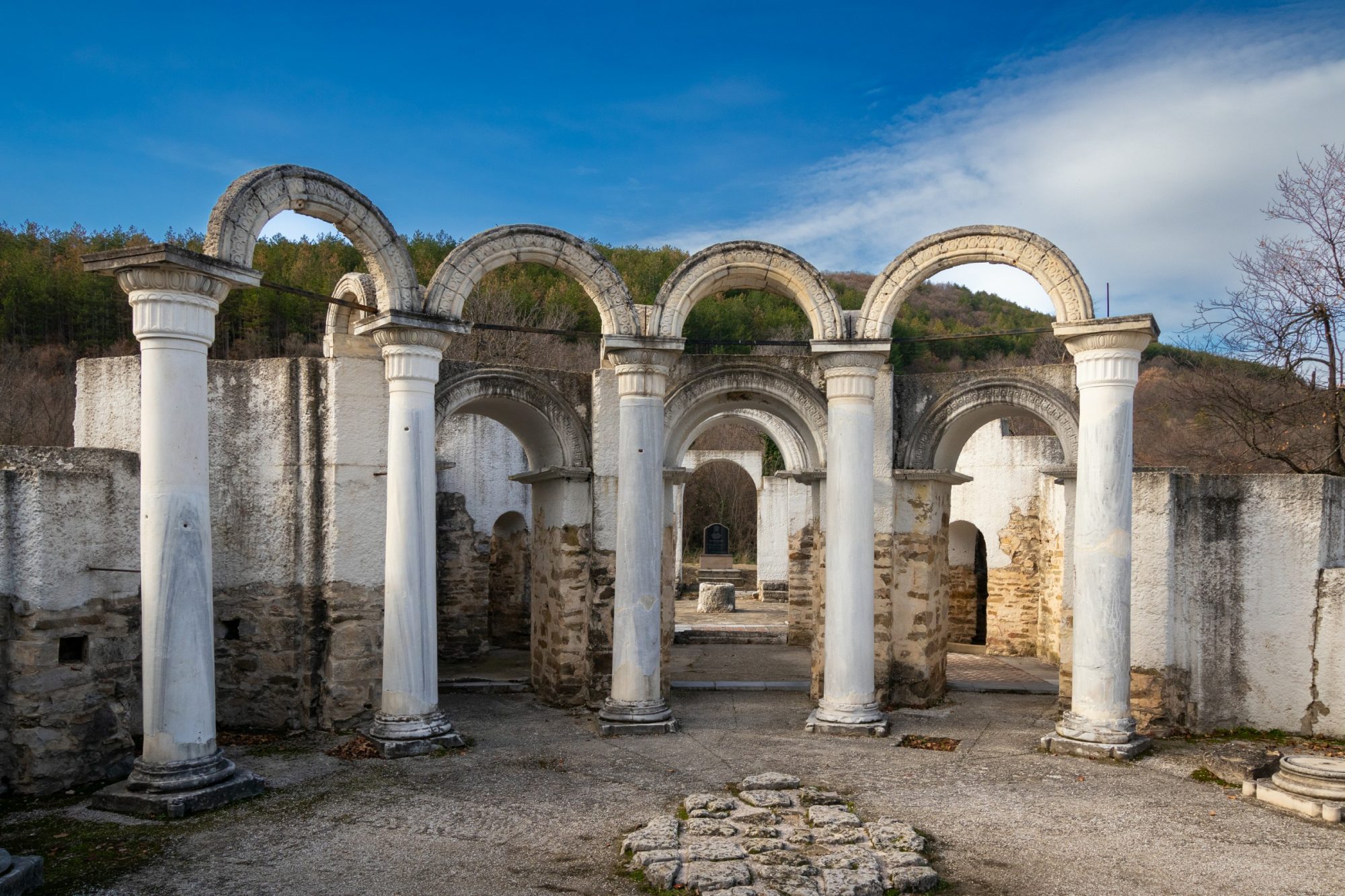



This is the first municipal bonsai garden in the yard of Srebrov’s house.
The bonsai garden caretaker, Radko Kolev has been growing bonsai trees for 25 years. He can give you more information when you visit the bonsai garden in Srebrov’s house.
Prices:
Ticket: 5 BGN 2,56 EUR
Children and students ( up to 26 years) 1 BGN 0,51 EUR
Senior citizens 3 BGN 1,53 EUR
Disabled over 50% ( a medical document needed) FREE
Family package ( 2 adults + 2 children up to 16 years old) 10 BGN 5, 11 EUR
Groups over 10 people 4 BGN per person 2,05 EUR
Combination tickets:
Bonsai garden + Srebrov’s house 8 BGN 4, 09 EUR
Bonsai garden + Srebrov’s house + Munument “Founders of Bulgarian state” 12 BGN 6, 14 EUR
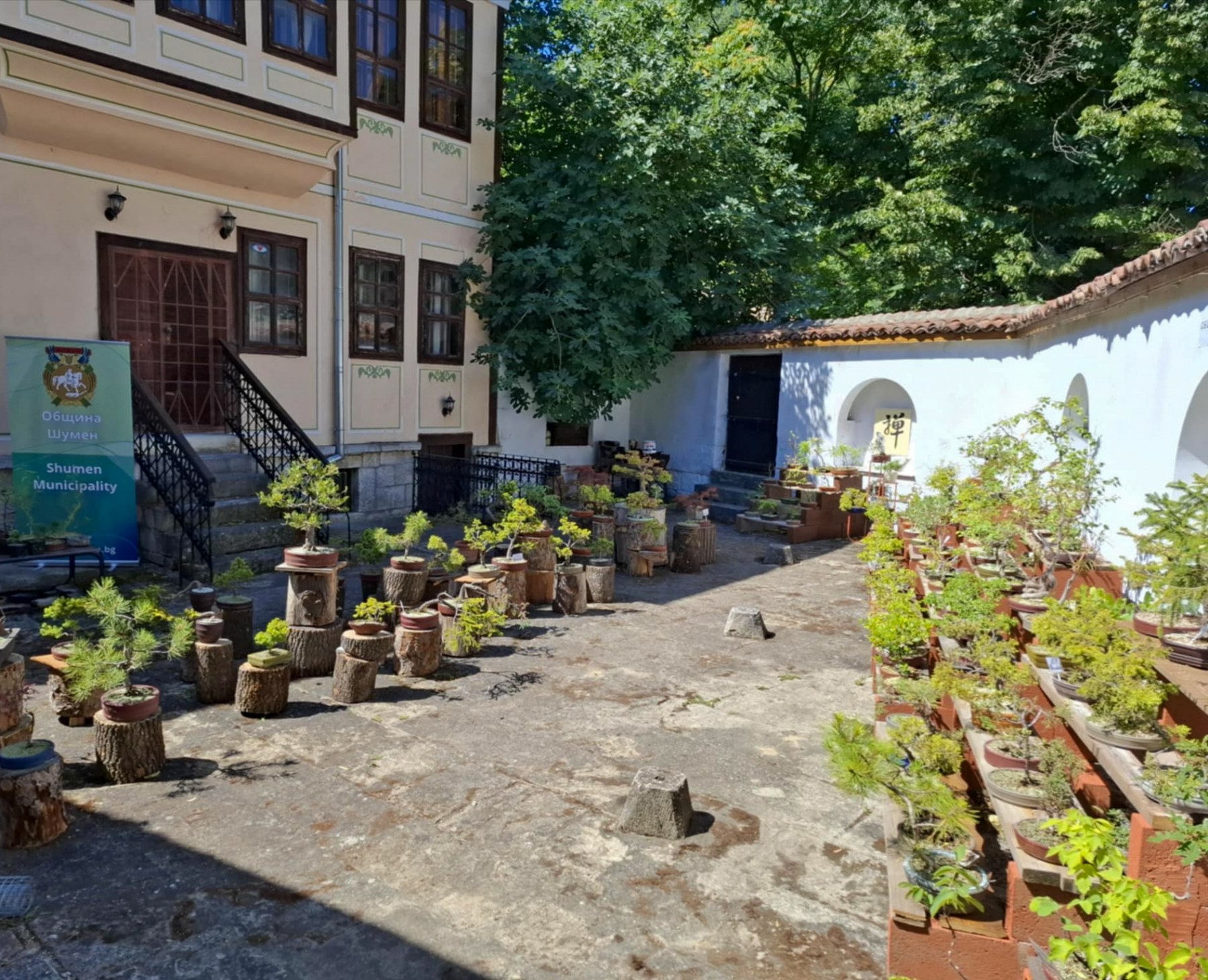
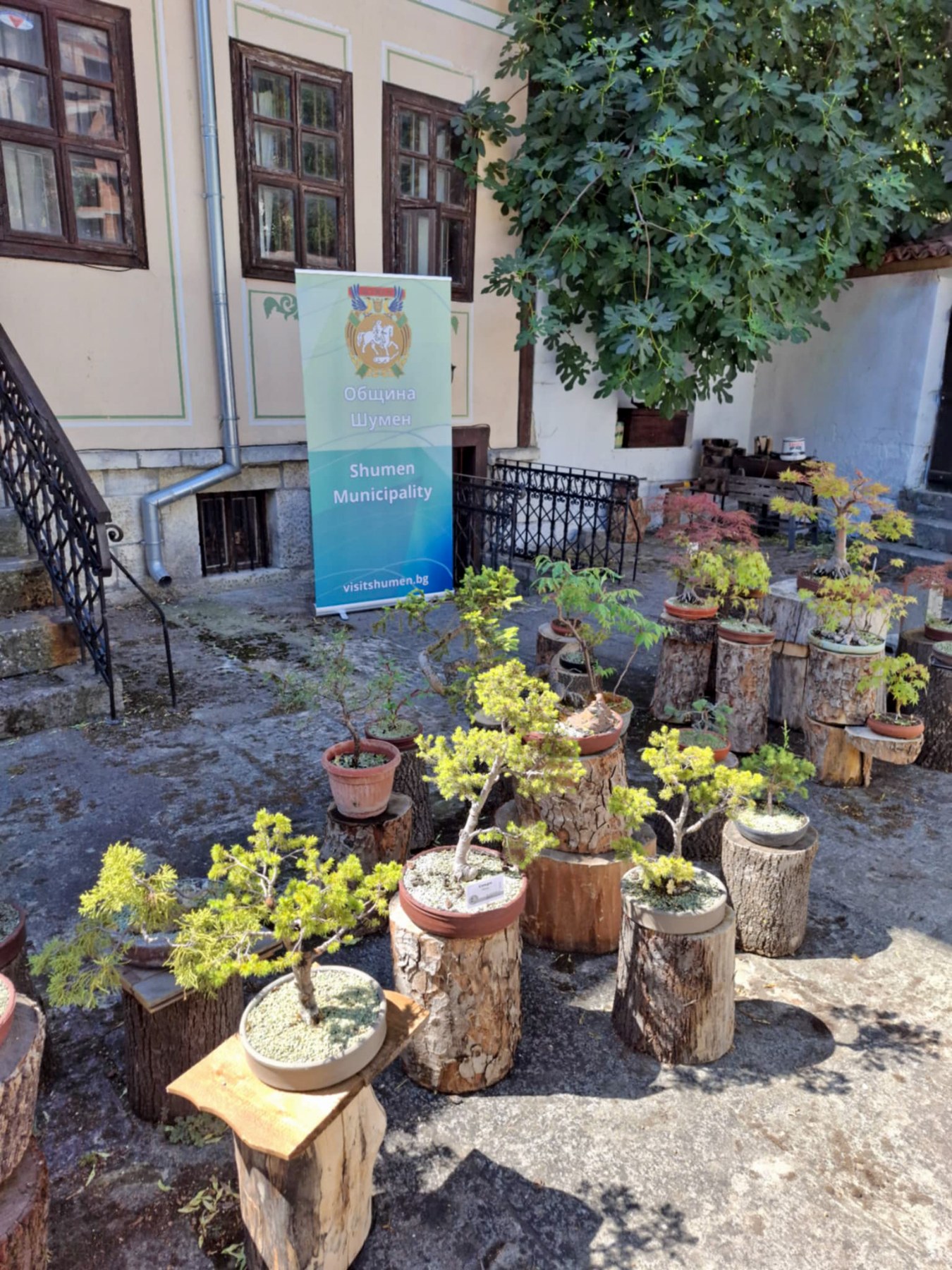
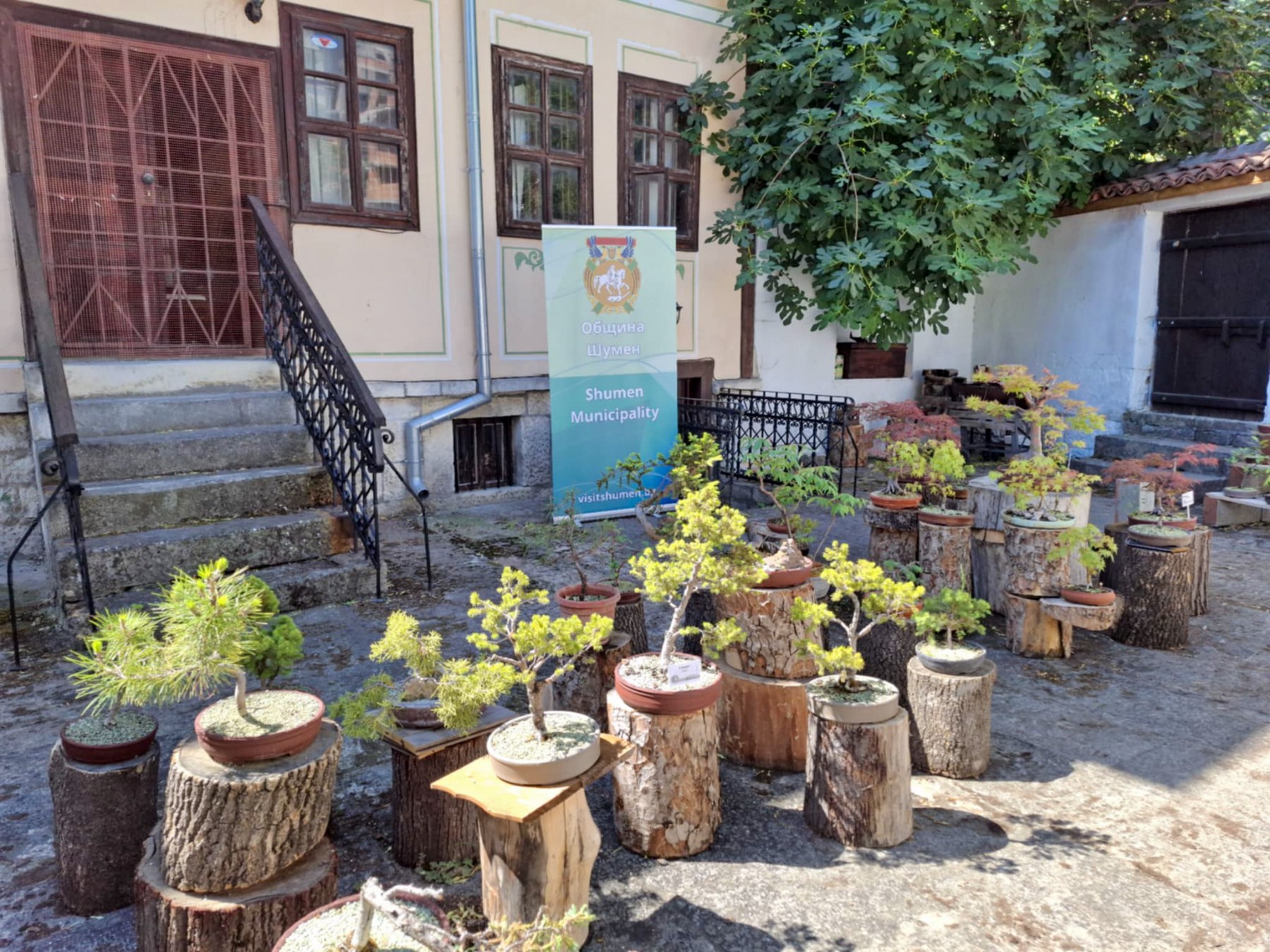
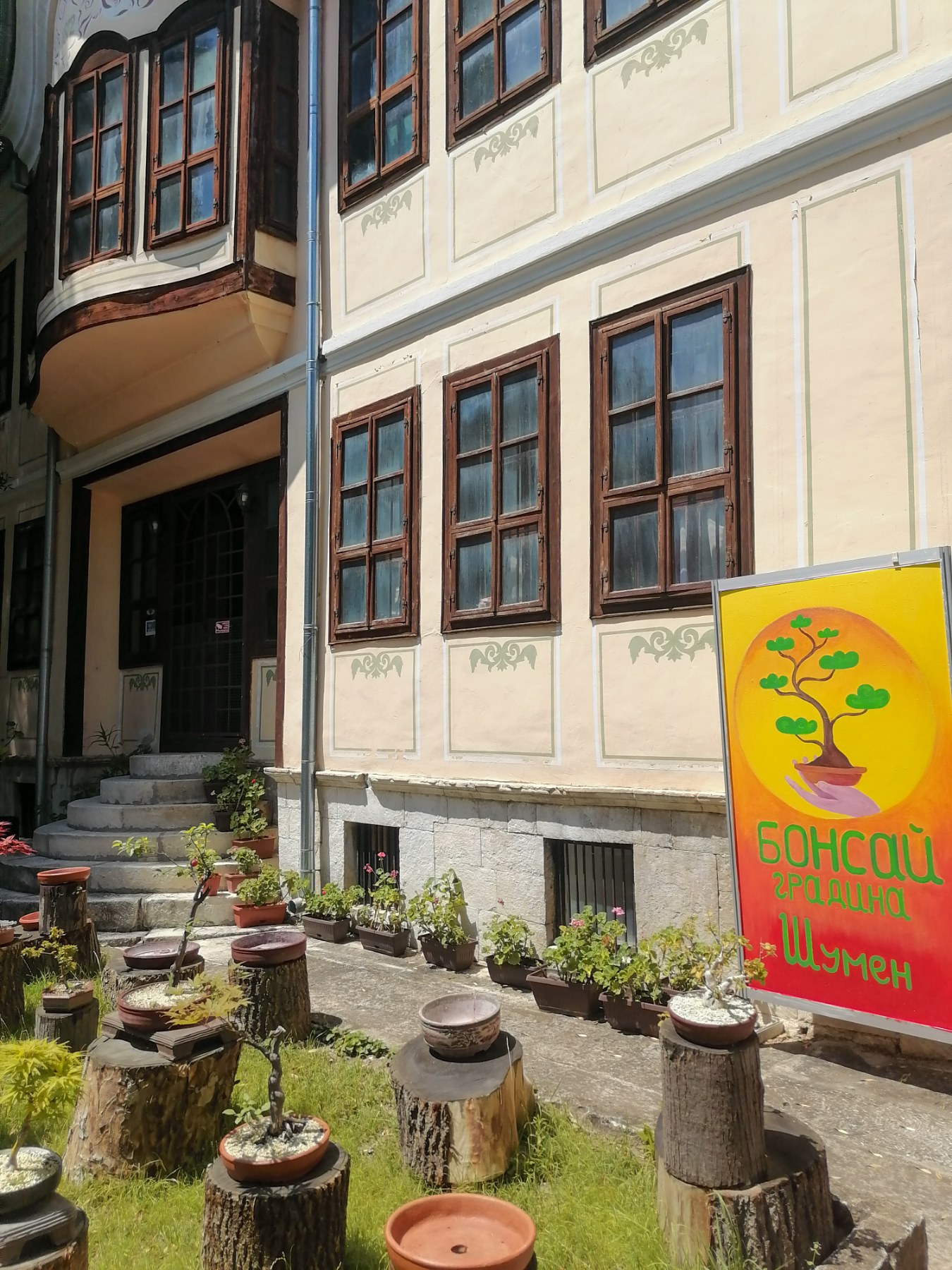
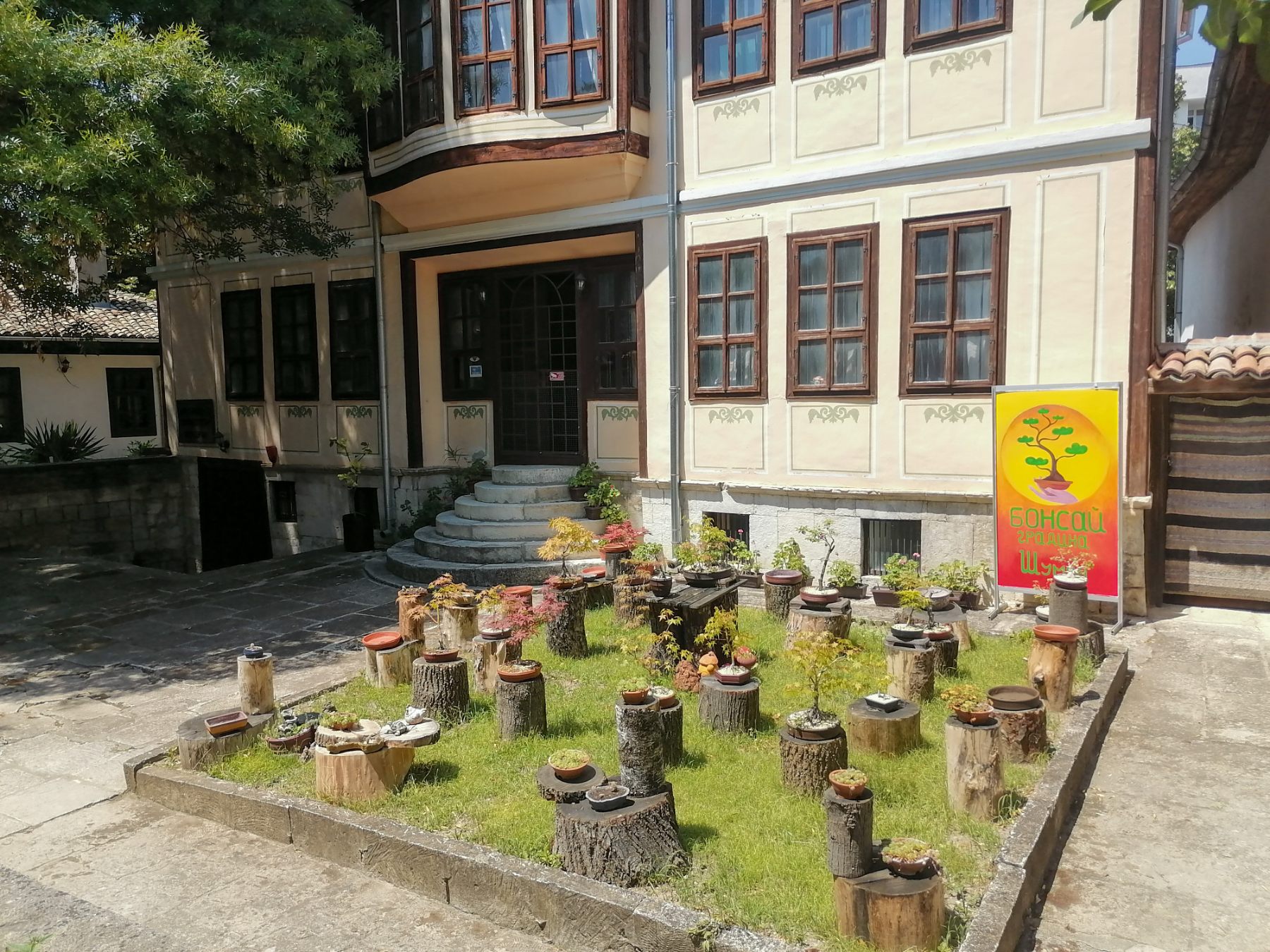
Madara National Historical-Archaeological Reserve encompasses a rich history, a wide range of archaeological artifacts, beautiful nature and the unique rock relief Madara Horseman. Here life began in the rocks, in the proximity of a deep spring, back in the Neolithic Age. A Thracian sanctuary of the three nymphs, pagan temples, ruins of Christian churches dating back to the 9th c., a rock monastery comprising of more than 150 monastic cells and churches from the 14th c., all provide evidence that Madara was a cult center during the whole of its existence.
As the only one of its kind medieval rock relief in Europe dating from the 8th c., the Madara Horseman was inscribed on the UNESCO World Heritage list, as a property having an outstanding value. It’s a global symbol of Bulgaria since 2008.
9750 Madara, Shumen District
Tel: + 359 (0) 5313 2095; Mobile: +359 (0) 893 342 225
8.30 – 20.00 (April – October) every day
8.30 – 17.00 (November – March) every day
Tickets: 7,00 BGN 3,58 EUR
Senior citizens: 5,00 BGN 2,56 EUR
Students: 3,00 BGN 1,53 EUR
www.museum-shumen.eu
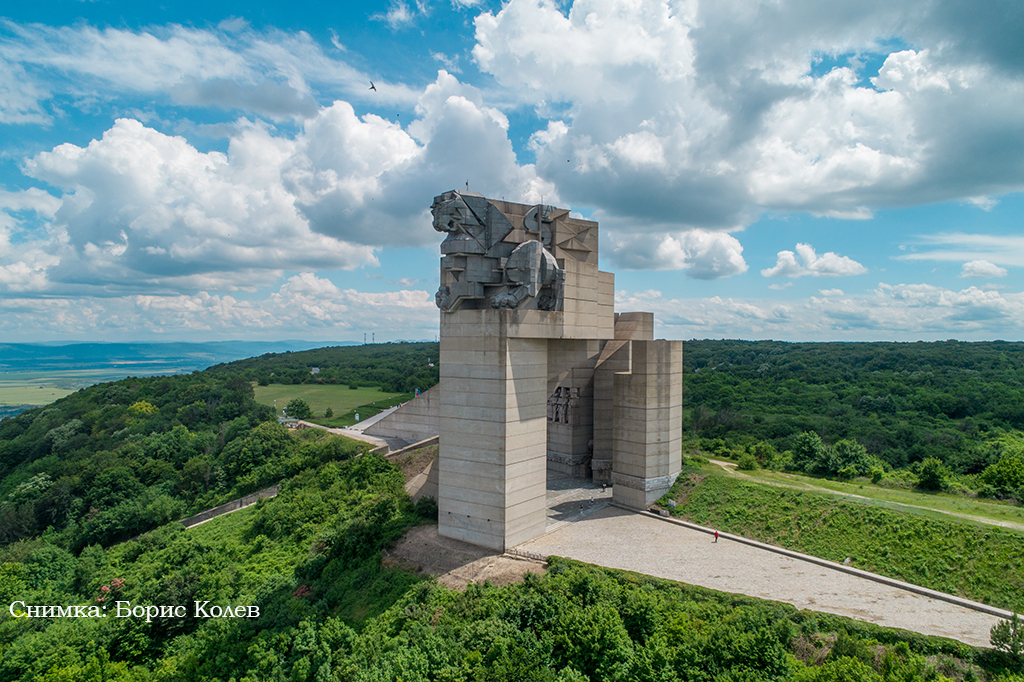
Memorial complex Founders of Bulgarian State, constructed to commemorate the 1300th anniversary of the foundation of the Bulgaria, was opened in 1981. It is located near the town of Shumen, within the territory of Shumen Plateau Nature Park and its silhouette can be seen within a 30 km radius. Its architecture construction consists of two groups of dynamic concrete structures built at different angles, facing north and south, with fixed sculpture figures of Bulgarian rulers from 7th-10th c. The largest outdoor mosaic-triptych on the Balkan Peninsula, by means of interrelated figures and letters, represents the idea of establishment, development and rise of the Bulgarian State. Medieval crosses along with stone pillar cleverly complete the gallery.
Next to the monument is on display an ancient Bulgarian yurt replica where tourists can experience the everyday life of the early Bulgars, dress up in costumes with armoury, take pictures and shoot a bow.
In the nearby information center is on display an exposition titled “Monumental art in the last decades of the 20th c.” where historical documentaries are screened. The main hall is a place for wedding ceremonies. In 1997 the complex received the awards of Shumen and “TOUREXPO” for its contribution to the development of tourism in the region.
Opening hours: April-October 08:30 h-19:00 h
November-March 08:30 h-17:00 h
Еntrance fee:
Adults: 6,00 BGN 3,07 EUR
Children and students up to 26 years: 3,00 BGN 1,53 EUR
Senior citizens: 4,00 BGN 2,05 EUR
People with disabilities: 1,00 BGN 0,51 EUR
Family package: 13,00 BGN 6,65 EUR
Guided tour in Bulgarian: 15,00 BGN 7,67 EUR
Guided tour in a different language: 25,00 BGN 12,78 EUR
Guided tours are available in five languages.
Group discounts:
More than 15 people: 5,50 BGN 2,81 EUR per person
Groups organized through Municipal enterprise “TOURISM, PUBLIC EVENTS AND ATTRACTIONS” or travel agencies: 5,00 BGN 2,56 EUR
Leaders of student groups: 0,00 BGN (groups must be more than 10 students)
FREE ENTRANCE for everyone: last Monday of every month
Combination ticket: Memorial complex and Srebrov’s house: 8,00 BGN 4,09 EUR
Entrance Proto-Bulgarian yurt -1,00 BGN 0,51 EUR
If you want to take a photo dressed up in Proto-Bulgarian clothes- 1,00 BGN per picture 0,51 EUR
Costumes and props for photoshoots- 5,00 BGN per photo 2,56 EUR
Civil marriage ceremony: 120 BGN 61,36 EUR ( weekdays and weekends)
bank holidays 150 EUR 76,70 EUR
Civil marriage ceremony in or in front of the ritual hall (in or outside the Information centre of the memorial complex) 95 BGN 48.57 EUR
Weekends and bank holidays 100 BGN 51,13 EUR
For more information:
Tel: +359 (54) 872 107, +359 (54) 872 598;
+359 (54) 857 773, +359 877 430 055
Shumen Fortress Historical-Archaeological Reserve, also known as the Old City, rises about 3 km west of present day Shumen. After its existence as a Thracian fortified city (5th–2ndc.BC), a dominating fortress which guarded main Roman roads (2nd–4th c.), a Byzantine fortress with control of the approach to the Balkan Mountains (5th–6thc.), and a strategic fortification in the early Middle Ages (8th–10thc.), in late Middle Ages (12th–14th c.) Shumen fortress turns into one of the most important cities in the Second Bulgarian Kingdom. Although conquered by Ali Pasha in 1388, the fortress remained in use in the early days of the Ottoman rule. In 1444, when the crusaders led by Vladislav III Jagelo fought against Ottoman army, it was demolished and burned by fire. Today it operates as an open-air museum.
Entrance fee: 6,00 BGN. 3,07 EUR
Senior citizens – 4,00 BGN. 2,05 EUR
Students – 2,00 BGN 1,02 EUR
Tel.: +359 (54) 800 381; Mobile: +359 (0)893 342 208
9.00 – 19.00 (April – October)
9.00 – 17.00 (November – March)
www.museum-shumen.eu
After reopening and resuming its activity, in the autumn of 1894, “Kabiyuk” stud farm consisted of horse studs from English Thoroughbred, Arabian breed, Orlov trotter, Bulgarian heavy draft (Ardennes) and other halfbred crossed horses, imported from Russia, Poland, Austro-Hungary, and Turkey.
During that period were developed breeds which still continue to be bred in Kabiyuk stud farm. These are East Bulgarian and Shagya Arabian breed. Later, in 1954 was developed English Thoroughbred, and in 1977 the Arabian Thoroughbred.
Currently in Kabiyuk horse stud farm are being bred about 300 horses. Every year about 80 horses are born and more than 70 horses with a different level of train are being sold in Bulgaria and abroad, mainly in Greece, Turkey, Cyprus, Macedonia and many other European counties. All horses that are being bred now belong to the above mentioned breeds. Precisely these are:
Small studs of Shetland ponies and Haflinger breed horses are currently also being bred.
For more information go to: +359 (54) 801 050; 0899 982 673
www.kabiuk.net
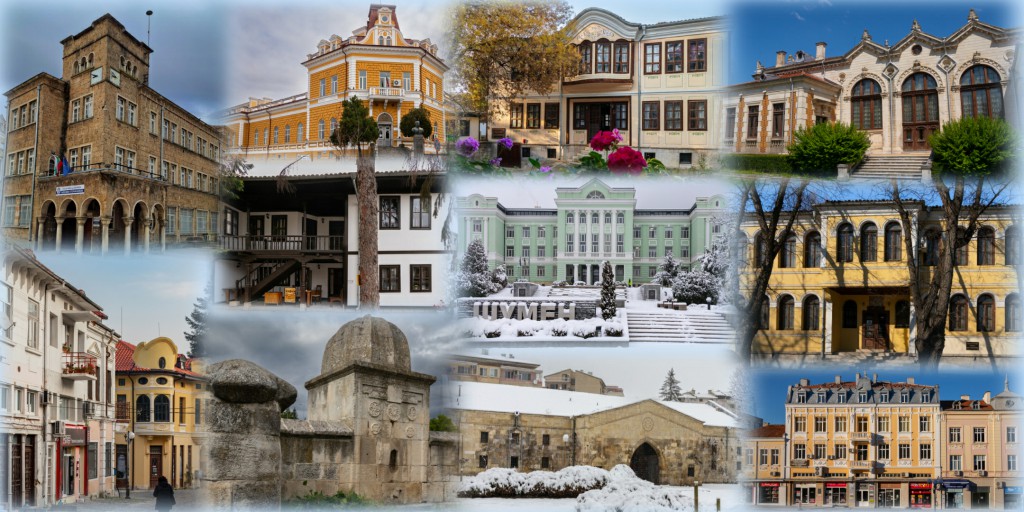
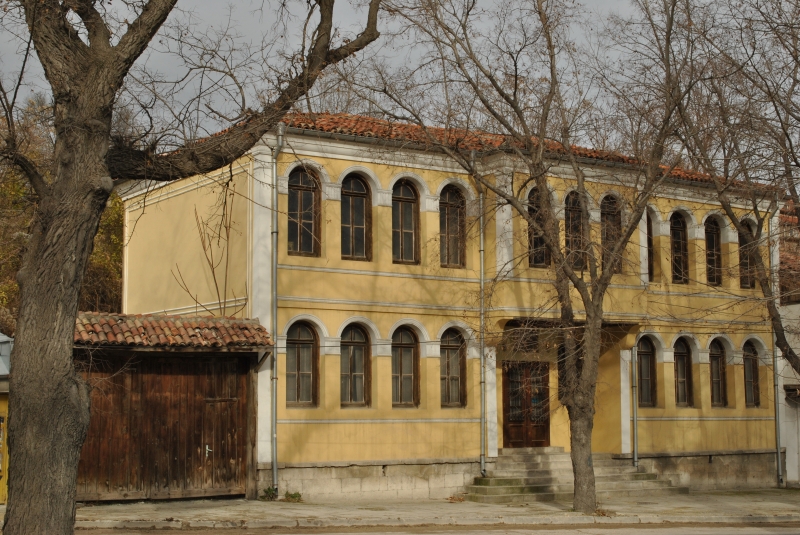

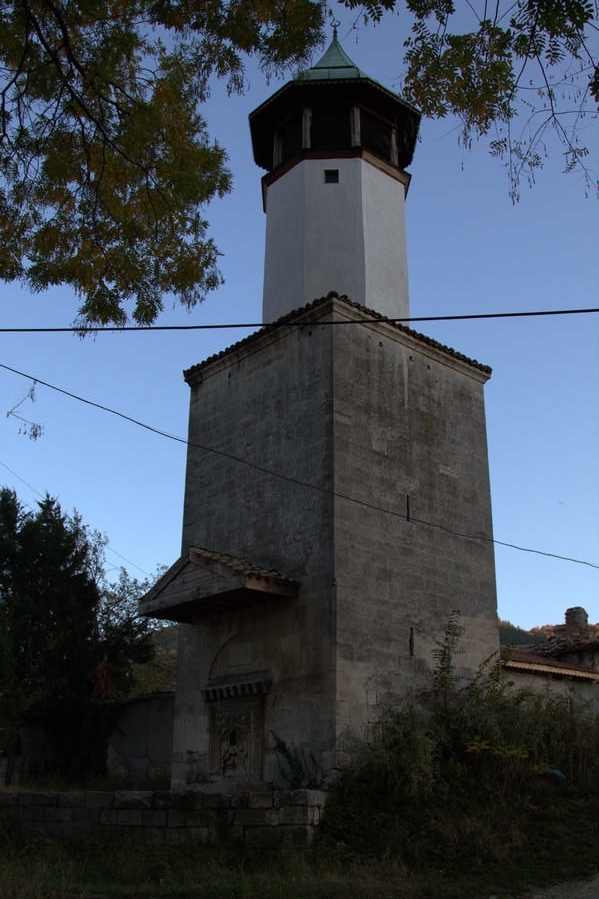
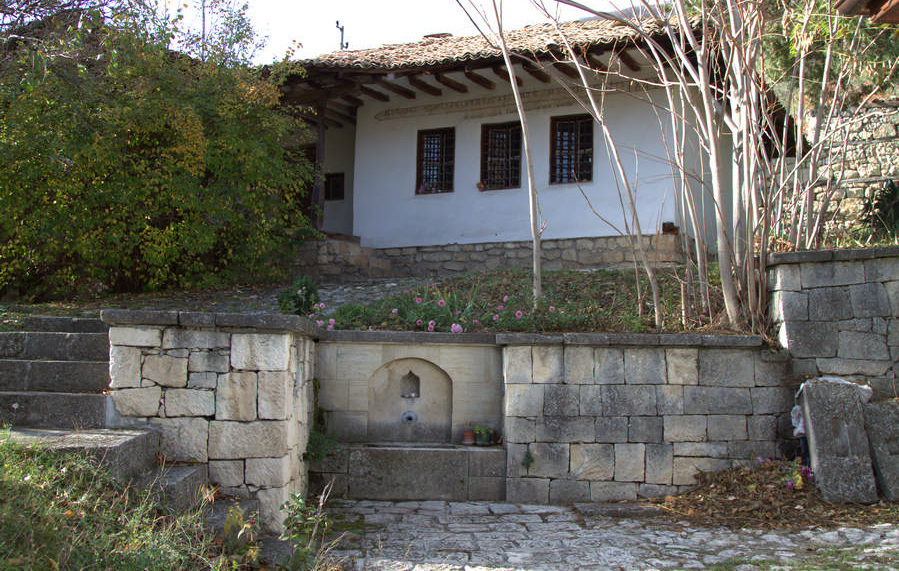
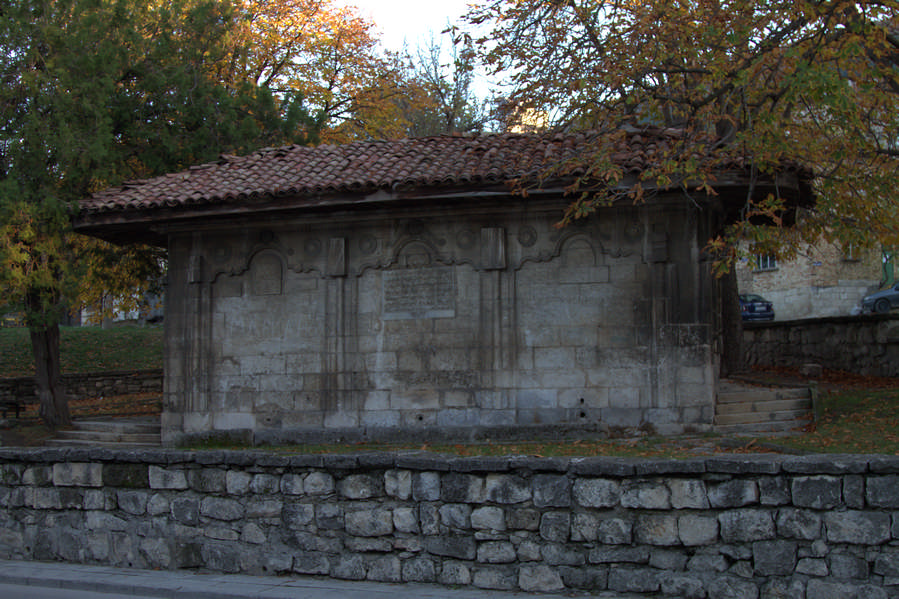
Community center Dobri Voinikov was founded in the spring of 1856 by Sava Dobroplodni, and boasts about its 150 years of cultural history. Along with other community centres in Svishtov and Lom it lays the basis of community and cultural activity in Bulgaria. A performance of the adapted comedy “Mihail Mishkoed” on August 15th 1856 lays the foundations of Bulgarian theater, as well as to the Art gallery, the artists’ and the writers’ society through Mayakovski literary club. The first musical theater performed in 1914 was the beginning of Bulgarian musical theater. The first Bulgarian library for children also opened doors in this community center.
The first theatre curtain from 1898, created by Viennese painters is also kept here. Shumen has a great contribution in the development of Bulgarian culture.
The building was designed by the French architect Mercier and built in 1898. Its architecture is a combination of several different architectural styles: Renaissance, Baroque and Secession, еnriched with with elements of Classicism.
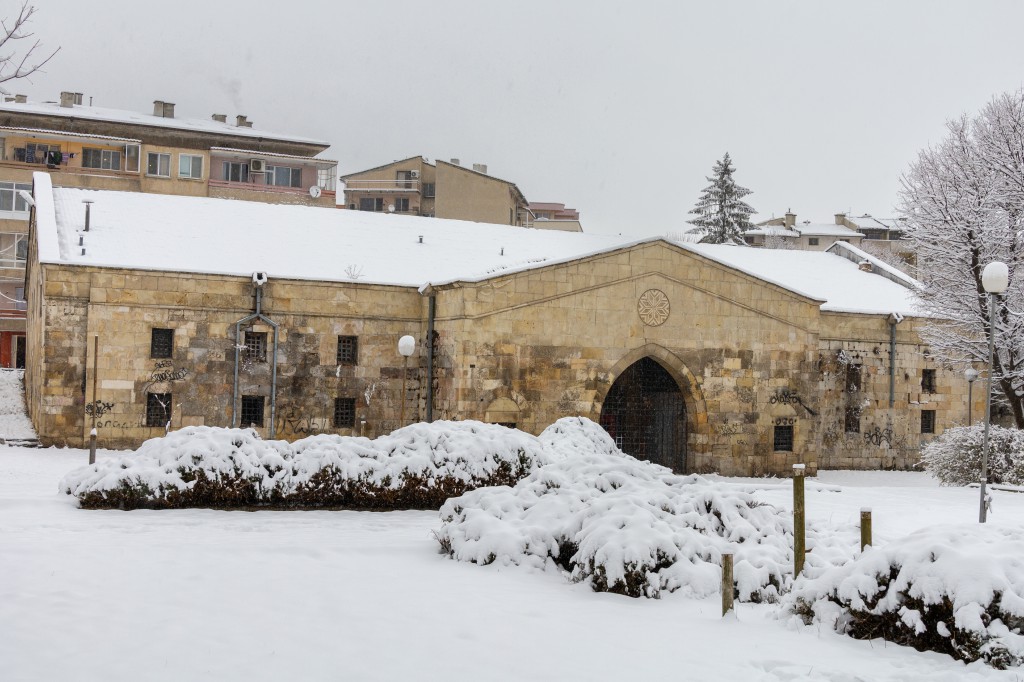
Bezisten is a cultural monument belonging to the period of the late Middle Ages.
Traders from Dubrovnik constructed the building in 1529 for their own needs. Once it was located in the very centre of Shumen, very close to Tombul mosque. Its name comes from Persian and means “covered market”. It was built with stone blocks. Plant, geometric and hand-written signs can be seen on its surface. In different time periods the building used to function as a covered market, weapons storage place and restaurant.
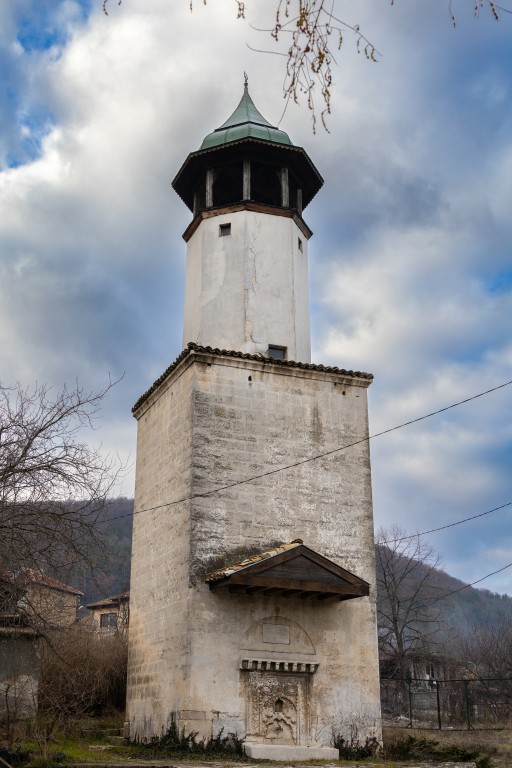
Among all clock towers from 17th c., the Tower of the Old Clock in Shumen is one of the oldest in Bulgaria. The verse written inscription carved in 1740 on its surface is one of the most impressive clock tower signs, enchanting with its witty and poetic narrative. The tower has a simplified clock mechanism which has worked non-stop for more than 270 years. The sound of a ringing bell used to count round the clock the working hours and they were observed strictly by all shopkeepers.
There’s a built-in fountain within its foundations – an eternal symbol of life meaning “water is the liveliest thing that exists”. At the same time, Tombul Mosque was constructed at the opposite side of Poroyna river. Because of the presence of the clock, the mosque was temporarily called “Sahat camisi”.
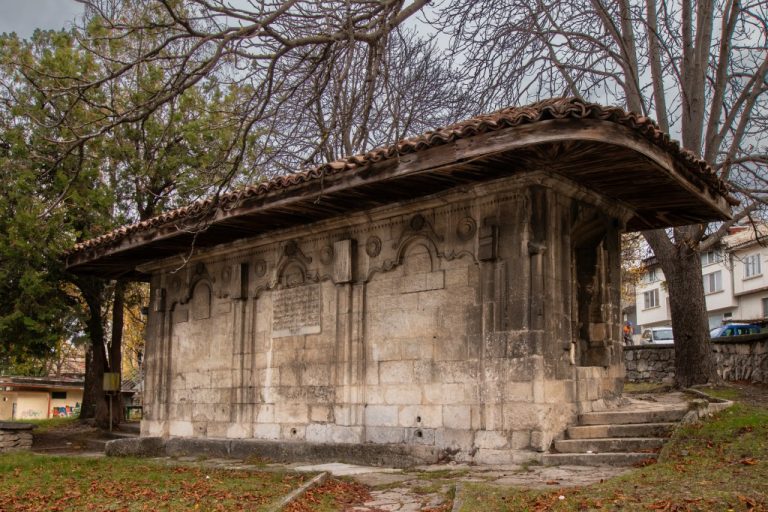
This is one of the most beautiful water fountains that dates back to the Ottoman period.
It was built in 1744 by limestone ashlar stone, and has a richly ornated facade. Initially it was covered with lead tiles where its original name came from. The Arabic for lead is “kurshun”. There are words in Ottoman language carved in the fountain that mean: “What a spring is this – similar to the spring of paradise, what a fountain is this – similar to the fountain of paradise. The building is as beautiful as paradise, and the water is more precious than living water.” According to the legend, the sultan decided to stop the wars and bloodshed, so he ordered the bullets to be melted down and the lead to be used to make the tiles for the fountain’s roof.
147 Syedinenie Str.
The Big (Father’s) Water Fountain
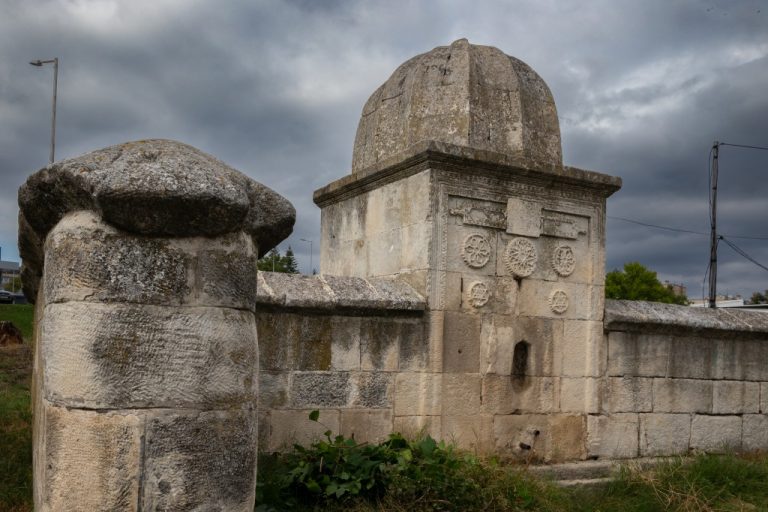
This fountain is in Balgaranov’s district, that was built before the Ottoman rule by Bulgarians who lived there until the 16th century. The fountain is believed to be built in 1688, and typical for this area. It is 2 m tall and carved with ornaments. This style is very typical of the Turkish fountains. Unfortunately, it does not function at the moment but it is a precious architectural site.

The house was built before 1870 and was included as part of its owner’s testament together with a vineyard and a garden for the maintenance of the first school for girls in Bulgaria. It has been there for 20 years until 1890. The people of Shumen named the school after the donor Andrey Rankov. People of Shumen call it the Teacher’s House.
68, Simeon Veliki Blvd
The church school (a school with tiny, cell-like rooms, built for religious education during the Ottoman rule) is among the first Bulgarian revival schools completely preserved in Bulgaria. It is located in the church’s yard, built the same year аs the church in 1846.
A video of the school: https://www.youtube.com/watch?v=IVDSNRYNqus
Kiliyno uchilishte Street
Tel. +359/ 899 803 882

Built in 19thc the house was owned by the wealthy local merchant Hadji Verbi. In 1876 his eldest son Evtim Verby graduated with a medicine degree from Athens University and worked as a military doctor. His other sons Peter and Dimitar were also famous doctors and had significant contribution to healthcare. There is the famous cafeteria Cufetaria where you can enjoy the traditional coffee on sand with a spoon of special white marmelade.
154 Tzar Osvoboditel Str.
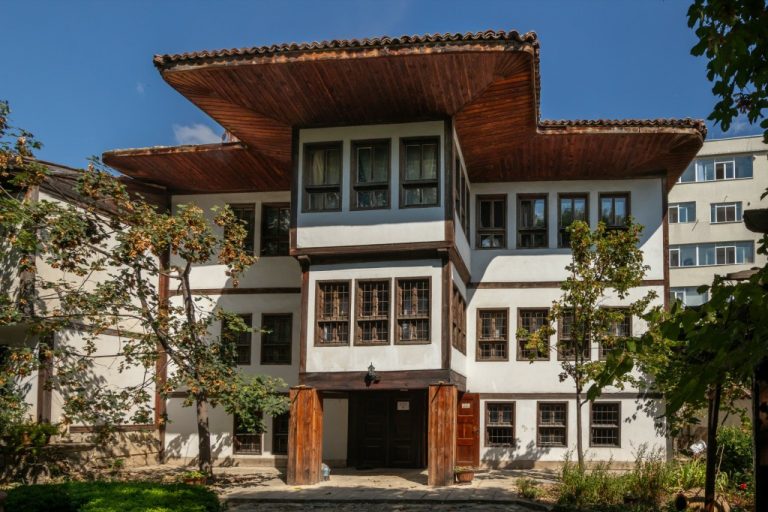
This house belonged to an Armenian merchant and is one and only of its kind, acompletely preserved, three- storey building from the middle of the 19th c.
Address: 14 Stara Planina Str.
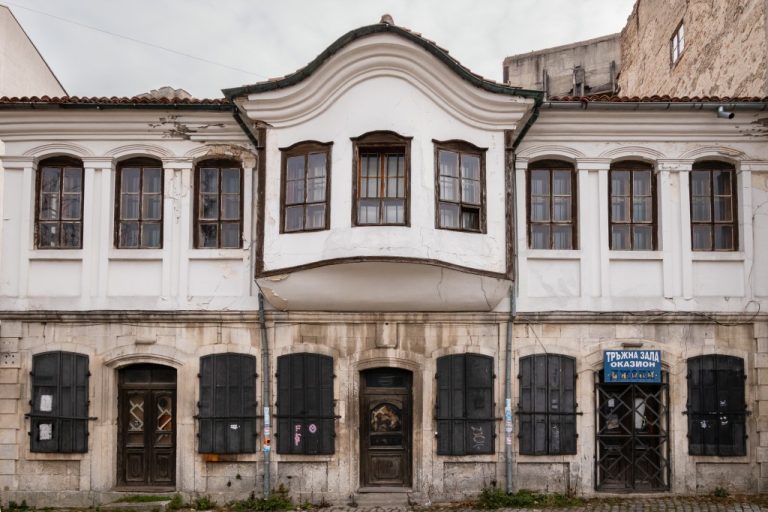
That is one of the two houses owned by the Kutsarovi brothers. The house is symmetrical on two floors with a bow – window, built at street level around 1872. The ground floor has massive walls of stone. There were three shops with same dimensions therein. They had different functions and their doors and windows were equipped with iron shutters. A school for girls was based in the one of them. A Hungarian chemist named Georgi Silagi opened here a pharmacy furnished and arranged according to the European model. In the beginning of 20th c., here was also the fashion shop of Bula Brenberg. It is the Home of the Union of the Bulgarian Architects since the 1980s.
145, Tsar Osvoboditel Street

This house belonged to a merchant’s family. According to the legend, here was the first town hall in Shumen.
140 Tzar Osvoboditel Str.
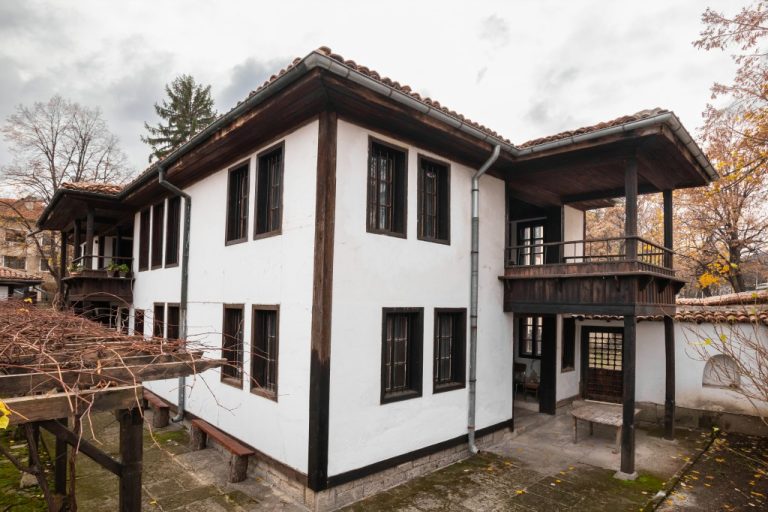
Built in the first quarter of 19th c, this was the house of a rich trader who was a mayor before the Liberation.
152 Tzar Osvoboditel Str.
Baba Rayna’s House

Baba Rayna’s house was built in 1850. Baba Rayna was one of the founders of the girls’ pedagogy school. The house has a secret passage. Nowadays, it is used for cultural events.
The military club

The military club is one of the most remarkable buildings in Shumen. It was built around 1901-1903. There is a huge dance hall inside that was used for military balls and later for ballroom dancing. Nowadays, the military club is used for different types of dance rehearsals, trainings and performances, such as salsa, modern dancing and Bulgarian folklore.
Address: 17, Slavyansky blvd.
The courthouse
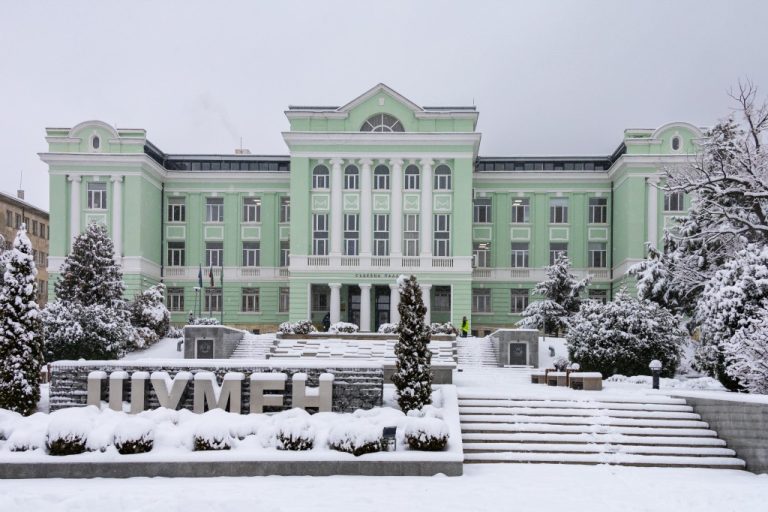
This is one of the most beautiful buildings in Shumen. It was opened around 1925 to serve as a Town hall. Nowadays, it is a courthouse.
Address: 70, “Saedinenie” str.
Police department
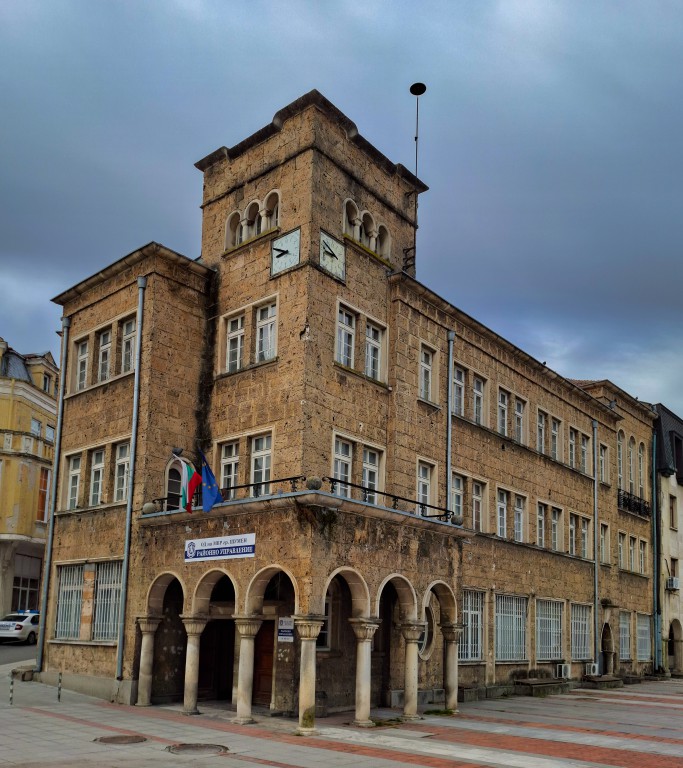
At first, this building was used for administrative purposes. Over time, it was adapted for the needs of the Ministry of Internal affairs and nowadays it is a police department. The building is an outstanding example of the architectural modernism of the 1930s – a style that reflects the characteristic features of public buildings from the period between World War I and World War II. Its facade has been preserved in its original form, making it a recognizable part of the urban landscape.
Address: 2, San Stefano Str
Hotel Ticha
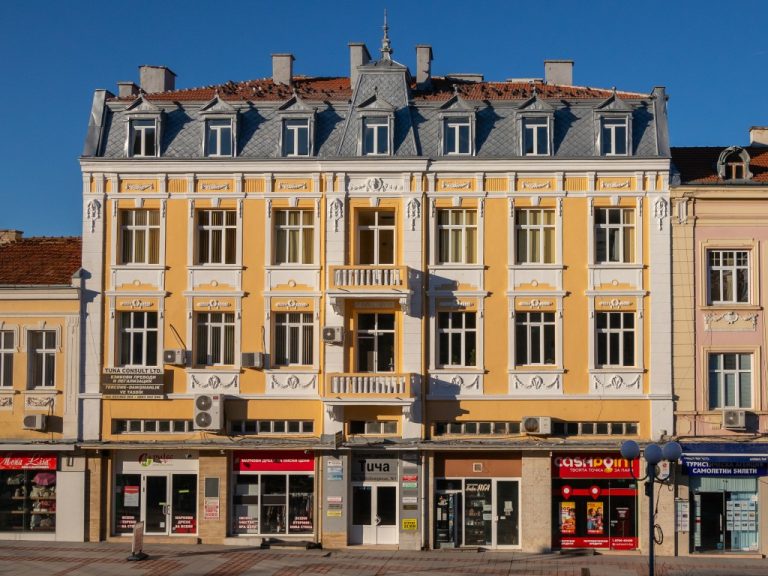
This remarkable architectural jewel is created by Toma Varhota, a famous architect from Shumen. It was designed to be a hotel and it opened on 1st January 1914. Hotel Ticha was extremely modern for its time: with 34 rooms, running water, its own beer hall and a Viennese salon. Later, until 1940s, this building was a home to a bookshop, that belonged to Petar Kanchev, a local publisher. Nowadays, it still functions as a hotel.
Address: 1, Osvobojdenie Square
A very interesting and different place for your visit would be the Sherif Khalil Pasha Mosque (Tombul Mosque). It is the third largest Muslim house of prayer on the Balkan Peninsula. It was built in 1744 by order of Sherif Khalil Pasha. The Mosque is known by the name “Tombul” because of the dome’s tumbled shape. The architecture of the temple is influenced by the oriental architectural style “Tulip”, which emerged in the early 18th century and is also characterized by elements of the French Baroque. The interior is lavishly decorated with sculpture, baroque details and stained glass windows. The craftsman has achieved great acoustics by incorporating clay pots. Against entrance fee, you can visit the mosque and walk around this unique cultural and historical monument, as well as explore its yard.
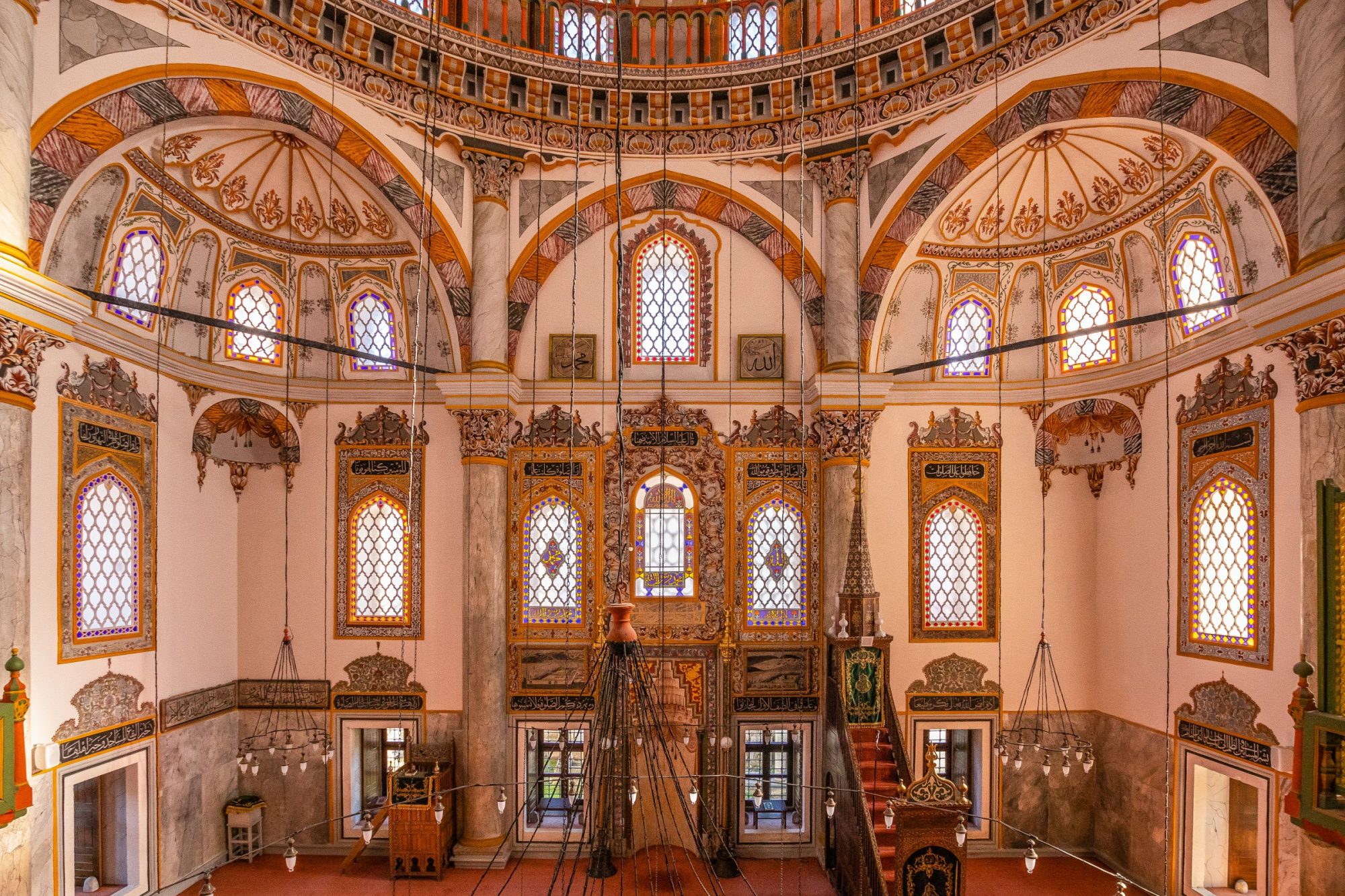
The complex was declared a cultural monument bearing national significance.
The mosque is one of the country’s 100 national tourist sites.
For more details:
Location: city of Shumen, 21 G. Rakovski Street
Tel: +359 (54) 802 875
09:00 – 18:00
Entrance fee: 4.00 BGN
